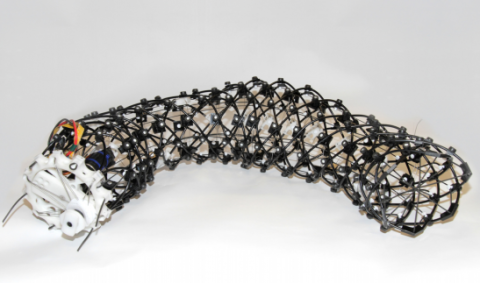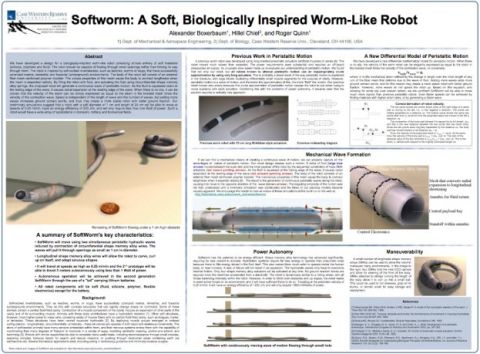Earthworms travel by contracting their body segments sequentially. This method of locomotion is particularly effective in constrained spaces. Soft worm robots may eventually have application in pipe inspection, burrowing, or exploration. Understanding the physics and control of this motion is a problem we are addressing with mechanical models, mathematics and computer simulation.
We have developed several innovative designs for a new kind of robot that uses peristalsis, the same method of locomotion earthworms use. Although the motion has been studied for some time, it has not been effectively or accurately implemented in a robotic platform. A new kinematic model and 2D simulation helps explain the limitations of discrete actuators acting on large segments to create this motion. In contrast, this prototype uses a continuous braided mesh exterior to produce waves of motion along the body of the robot.
Compliant Modular Mesh Worm (CMMWorm), utilizes a compliant mesh actuated at modular segments to create waveforms along its body. These waveforms can generate peristaltic motion of the body similar to that of an earthworm. The modular mesh is constructed from 3-D printed and commercially available parts allowing for the testing of a variety of components that can be easily interchanged. In addition to having independently controlled segments and interchangeable mesh properties, CMMWorm also has high range of contraction (52% of maximum diameter). The six-segment robot can traverse flat ground and pipes.
A paper on the design of the robot was recently published in the International Journal of Robotics Research. The final version is available here, and the first draft is available here if you do not have a subscription to the journal. Our most recent publication on a soft body controller can be found here.



